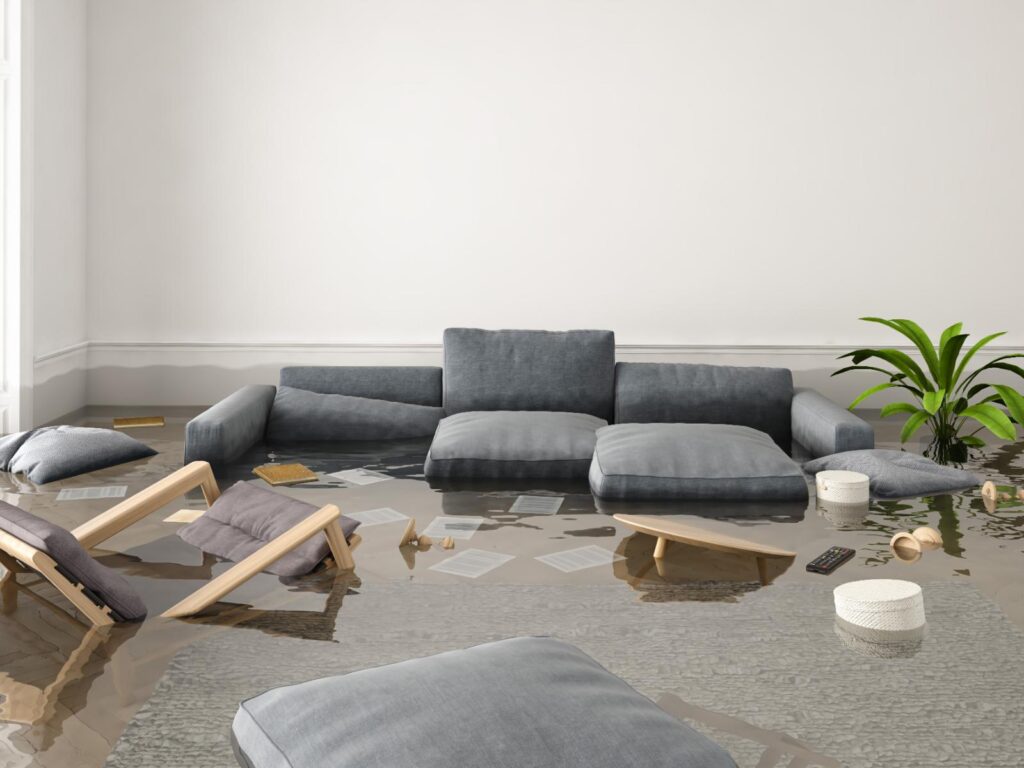
Contents
You might think that water damage restoration is stuck in the past, but 2025 is set to revolutionize the field with advanced techniques. By incorporating smart technology and eco-friendly practices, restoration processes will become more efficient and effective. Innovative methods for extraction and drying, along with cutting-edge mold prevention strategies, will redefine how you approach water damage. Discover how these advancements can not only streamline restoration but also promote a healthier living environment.
Key Takeaways
Utilize advanced water extraction methods, such as thermal imaging and high-powered pumps, for rapid and efficient removal of standing water.
Implement innovative drying techniques like infrared drying and low-grain refrigerant dehumidifiers to accelerate moisture removal in high-humidity environments.
Incorporate smart technology, including real-time sensors and predictive analytics, for proactive monitoring and immediate response to potential water damage.
Adopt eco-friendly restoration practices, using non-toxic agents and energy-efficient equipment, to minimize environmental impact while ensuring effective restoration.
Employ advanced mold prevention strategies, such as antimicrobial coatings and HEPA filtration systems, to inhibit mold growth during the restoration process.
Advanced Water Extraction Methods
When you’re faced with water damage, utilizing advanced water extraction methods can considerably minimize the impact on your property. These advanced extraction technologies are designed to remove standing water quickly and efficiently, reducing the risk of mold growth and structural damage.
High-powered pumps and specialized vacuum systems are essential tools in this process. They work in tandem to extract large volumes of water, ensuring that no moisture is left behind.
In addition, using thermal imaging can help identify hidden pockets of water, allowing for targeted extraction efforts. This precision not only speeds up the restoration process but also protects your property from further deterioration.
Implementing these advanced extraction methods requires trained professionals who understand the nuances of water damage restoration. By investing in these technologies, you’re not just restoring your property; you’re ensuring a safer, healthier environment for you and your loved ones.
Innovative Drying Techniques
In water damage restoration, utilizing advanced dehumidification methods greatly accelerates the drying process by effectively reducing moisture levels in the air.
You can also leverage infrared drying technology, which targets specific wet areas with precision, ensuring thorough drying without damaging surrounding materials.
These innovative techniques enhance efficiency and improve the overall quality of restoration efforts.
Advanced Dehumidification Methods
Although traditional dehumidification methods have long been the standard in water damage restoration, advanced techniques are now revolutionizing the way professionals approach drying processes.
These innovative dehumidification techniques enhance humidity control, ensuring a more efficient restoration.
Here are three advanced methods gaining traction:
Low-Grain Refrigerant (LGR) Dehumidifiers: These units operate at lower temperatures, effectively removing moisture in high-humidity environments.
Desiccant Dehumidifiers: Utilizing absorbent materials, these systems excel in extreme humidity, drawing moisture from the air without cooling it.
Heat Pump Dehumidifiers: These energy-efficient units transfer heat and humidity away, making them ideal for large-scale operations.
Embracing these methods not only improves outcomes but also fosters a sense of community among professionals aiming for excellence in water damage restoration.
Infrared Drying Technology
Infrared drying technology represents a significant advancement in the field of water damage restoration, offering a rapid and efficient solution for moisture removal. By utilizing infrared technology, you can expedite the drying process while ensuring thorough moisture detection. This method targets the moisture at a molecular level, allowing for deeper penetration and faster evaporation.
| Benefits | Applications | Key Features |
|---|---|---|
| Rapid drying | Residential properties | Portable units |
| Energy efficiency | Commercial buildings | User-friendly design |
| Enhanced moisture detection | Industrial sites | Adjustable settings |
Cutting-Edge Mold Prevention Strategies
When tackling mold prevention, employing state-of-the-art strategies can greatly reduce your risk of infestations.
By integrating advanced techniques, you can create a healthier environment for yourself and your community. Here are three cutting-edge strategies you can implement:
Biological Barriers: Utilize antimicrobial coatings that inhibit mold growth on surfaces, providing an extra layer of protection.
Moisture Management: Invest in high-efficiency dehumidifiers to maintain ideal humidity levels, ensuring your space stays dry and mold-free.
Air Filtration Systems: Install advanced HEPA filtration systems that trap airborne spores, considerably reducing the likelihood of mold proliferation.
Smart Technology in Water Damage Assessment
As water damage can escalate quickly, leveraging smart technology for assessment is essential in mitigating risks and ensuring efficient remediation. Smart sensors play a pivotal role by providing real-time data on moisture levels, temperature, and even air quality.
These devices can be strategically placed in vulnerable areas, enabling you to detect issues before they manifest into significant problems.
Incorporating predictive analytics further enhances your assessment capabilities. By analyzing historical data and current conditions, you can forecast potential water damage scenarios, allowing for proactive measures.
This technology empowers you to make informed decisions, optimizing your response strategies and minimizing downtime.
Using smart technology not only streamlines the assessment process but also fosters a sense of community among those in the restoration field.
You can collaborate with others, sharing insights and experiences, ultimately strengthening your collective approach to water damage restoration.
Embrace these advancements to elevate your restoration practices and protect your environment effectively.
Eco-Friendly Water Damage Restoration Practices
While traditional water damage restoration methods often rely on harsh chemicals and extensive use of resources, adopting eco-friendly practices can greatly reduce environmental impact.
By implementing sustainable materials and techniques, you contribute to a healthier planet while ensuring effective restoration.
Here are three eco-friendly practices you can adopt:
Use of Non-Toxic Cleaning Agents: Opt for biodegradable and plant-based products that effectively clean without harming the environment.
Energy-Efficient Equipment: Choose restoration equipment that minimizes energy consumption, such as low-energy dehumidifiers and dryers.
Green Certifications: Work with certified professionals who prioritize eco-friendly practices, ensuring that your restoration process meets sustainability standards.
Rapid Response Protocols for Emergency Situations
In emergency situations like water damage, implementing rapid response protocols can greatly mitigate damage and expedite the restoration process. Your emergency preparedness plan should include a well-trained response team, equipped with the right tools and knowledge. By acting quickly, you can help prevent secondary damage and reduce overall restoration costs.
| Action | Timeframe |
|---|---|
| Assess the damage | Immediately |
| Notify the response team | Within 15 minutes |
| Begin mitigation | Within 30 minutes |
| Document the damage | Within 1 hour |
These steps are vital for effective communication and coordination among team members. Guarantee everyone knows their roles and responsibilities. Regular training sessions can enhance team efficiency and readiness. By mastering rapid response protocols, you foster a culture of safety and belonging within your community, making certain everyone can rely on each other during crises.
Comprehensive Flood Cleanup Procedures
When facing a flood situation, your first step is conducting a thorough initial assessment to determine the extent of the damage.
This evaluation will guide your decisions on effective drying techniques necessary for mitigating further issues.
Implementing these strategies promptly can greatly impact the restoration process.
Initial Assessment Steps
Before diving into the cleanup process, conducting a thorough initial assessment is essential for effective flood restoration. This step lays the groundwork for successful recovery and guarantees you’re addressing all concerns.
Here’s what you need to focus on during your initial inspection:
Identify Affected Areas: Pinpoint which rooms and materials have been impacted by the floodwaters.
Assess Structural Integrity: Evaluate walls, ceilings, and floors for any signs of compromise or instability.
Categorize Damage: Determine the type and extent of damage, which will inform your damage evaluation and restoration strategy.
Taking these steps not only enhances your understanding of the situation but also helps you develop a targeted response plan.
Effective Drying Techniques
Following the initial assessment, implementing effective drying techniques is vital for mitigating further damage and ensuring a successful restoration.
Start by using moisture mapping to identify all affected areas, as this helps you prioritize drying efforts. Employ high-capacity dehumidifiers and air movers to expedite the process, while monitoring humidity levels closely.
It’s important to maintain airflow, so keep doors and windows open where possible, allowing for ideal evaporation. Regularly check surfaces to prevent hidden mold growth, sticking to your restoration timelines.
State-of-the-Art Equipment for Restoration
Advancements in technology have revolutionized water damage restoration, equipping professionals with state-of-the-art tools that enhance efficiency and effectiveness.
With the latest restoration technology, you can trust that your property will be restored to its original condition swiftly and thoroughly.
Here are three key equipment innovations transforming the industry:
High-Performance Dehumidifiers: These machines extract moisture rapidly, preventing mold growth and structural damage.
Thermal Imaging Cameras: They identify hidden moisture pockets, enabling precise targeting for drying efforts.
Air Movers: Designed to increase airflow, they expedite the drying process, ensuring a thorough restoration.
Expert Tips for Long-Term Water Damage Prevention
While water damage can occur unexpectedly, implementing proactive measures can greatly reduce the risk. Start by investing in effective waterproofing solutions for your property. This includes applying sealants to basements and crawl spaces, which can prevent moisture intrusion.
Additionally, guarantee that your roof and gutters are in good repair; even a small leak can lead to significant damage over time.
Next, focus on proper drainage systems. Make sure your landscaping directs water away from your foundation. Installing French drains or sump pumps can manage excess water effectively, particularly in flood-prone areas.
Regularly inspect these systems to guarantee they function correctly.
Finally, maintain your plumbing by checking for leaks and replacing old pipes. By taking these measures, you’ll create a resilient environment that minimizes the risk of water damage, fostering a sense of security and belonging in your home.
Insurance Considerations for Water Damage Claims
Understanding the intricacies of insurance evaluations for water damage claims is essential, especially since policies can vary greatly.
Maneuvering through these complexities can help you secure your rightful compensation. Here are three key factors to reflect on:
Policy Coverage: Review your policy to identify what types of water damage are covered, including sudden leaks or long-term moisture issues.
Claim Documentation: Keep thorough records of all damage and restoration efforts. Photographs, invoices, and receipts can greatly bolster your claim.
Timely Reporting: Notify your insurance company as soon as possible. Many policies have strict time limits for reporting claims, so don’t delay.
Final Thoughts
In 2025, embracing these secret techniques will transform your approach to water damage restoration. By utilizing advanced water extraction methods, implementing innovative drying techniques, and adopting cutting-edge mold prevention strategies, you can guarantee a more efficient and sustainable restoration process. With smart technology for assessment and eco-friendly practices for cleanup, you’ll not only protect your property but also contribute to a healthier environment. Invest in these methods now, and you’ll safeguard your space for the future.
Recent Posts
Why Choose 24/7 Water Extraction for Flooding?
Imagine a family returning home after a weekend getaway, only to find their basement flooded
3 Best Emergency Water Damage Restoration Techniques
When it comes to water damage restoration, think of it as a race against time.
Why Choose Rapid Water Damage Restoration Techniques?
Did you know that mold can start to grow within just 24 to 48 hours
